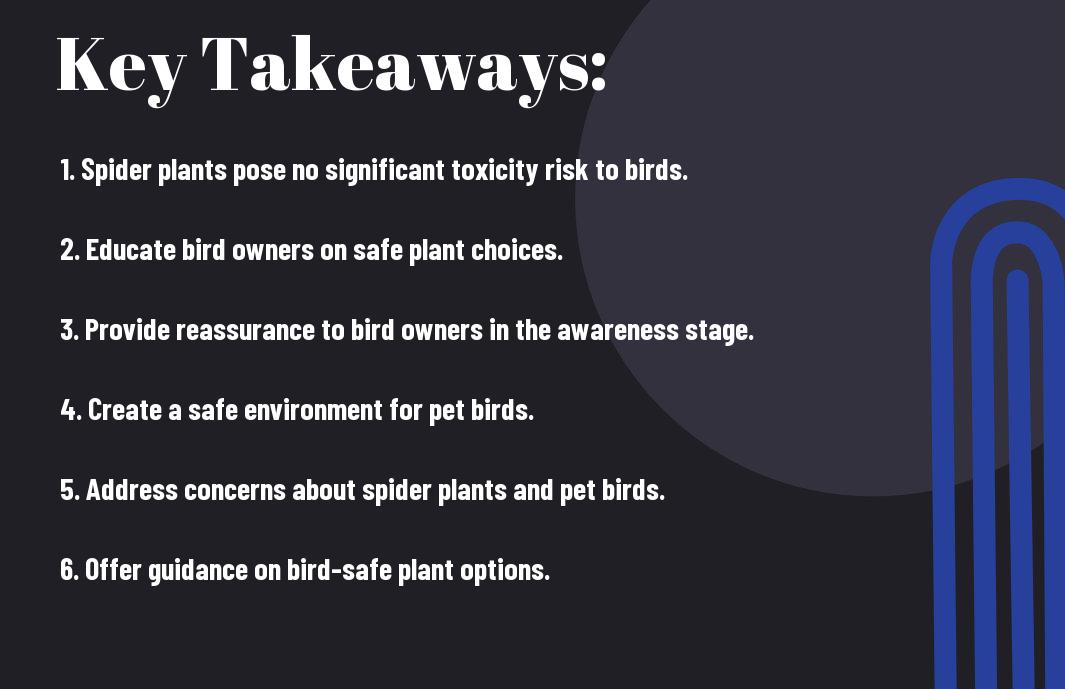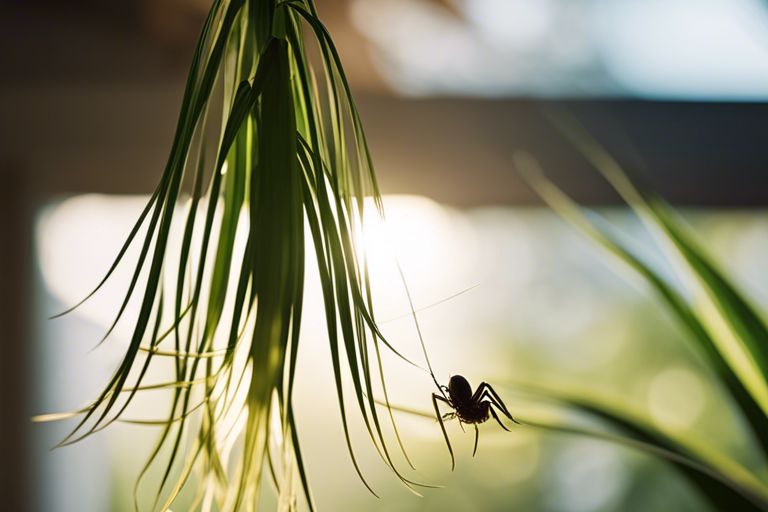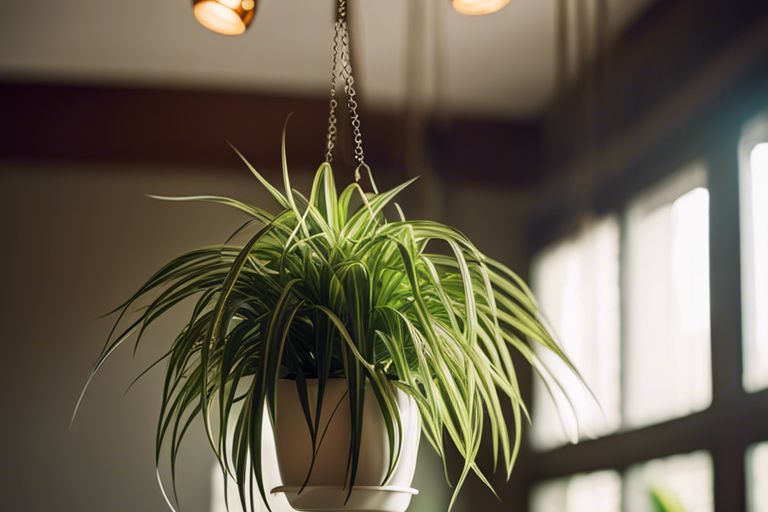Over the rainbow and through the woods, bird owners in the awareness stage wonder if spider plants pose a threat to their feathered friends. Fear not! This informative blog post will shed light on whether spider plants are safe for birds, addressing potential risks and offering guidance to create a safe environment for your pet avian companions. Let’s probe into the world of plant toxicity and reassure bird owners about the safety of spider plants in their homes.

Key Takeaways:
- Spider plants are generally safe for birds: Despite some concerns, spider plants are not toxic to birds and can be a beautiful addition to your home without posing a threat to your feathered friends.
- Creating a safe environment is key: While spider plants are safe, it’s important to ensure your bird’s living space is free from potential hazards like pesticides, toxic plants, and other harmful substances.
- Educate yourself and reassure your bird’s safety: By understanding the risks associated with certain plants and taking necessary precautions, you can confidently enjoy the company of your bird and the beauty of spider plants in your home.


What are Spider Plants?
Brief History and Characteristics
One of the most popular houseplants, spider plants, also known as Chlorophytum comosum, are beloved for their long, arching leaves and spider-like plantlets that dangle from the mother plant. Native to South Africa, spider plants are easy to care for and make a lovely addition to any indoor space.
Popularity as Houseplants
For bird owners in the awareness stage of their buying journey, spider plants are often considered a safe and non-toxic option to have in their homes. It important to note that while spider plants are generally safe for dogs and cats, they may pose a risk to pet birds if ingested in large quantities. It is wise for bird owners to take precautions to ensure a safe environment for their feathered friends.
Are Spider Plants Toxic to Birds?
The Potential Risks
With concerns about the safety of our beloved feathered friends at the forefront of every bird owner’s mind, it’s crucial to address the potential risks associated with spider plants in our homes.
Toxic Compounds and Their Effects
Effects of certain toxic compounds found in spider plants can be concerning for bird owners. Some harmful effects include gastrointestinal upset, vomiting, and even potential toxicity for our avian companions.
Potential dangers from ingesting spider plant leaves highlight the importance of creating a safe environment for pet birds, free from any potential hazards such as toxic plants.
Why Spider Plants Can Be Harmful to Birds
Ingestion and Digestive Issues
All spider plants, including the Chlorophytum comosum variety commonly found in homes, contain chemical compounds that are toxic to birds if ingested. Birds are curious creatures and may nibble on the leaves or even the soil of these plants, leading to potential digestive issues such as vomiting, diarrhea, or even more severe reactions. It’s crucial to keep spider plants out of reach of your feathered friends to prevent accidental ingestion.
Respiratory Problems and Allergic Reactions
With their beautiful, cascading leaves and easy care requirements, spider plants may seem like perfect additions to your home. However, some birds may develop respiratory issues or allergic reactions when exposed to the pollen or other substances released by these plants. These reactions can manifest as coughing, sneezing, or difficulty breathing, posing a significant risk to your pet’s health.
A safe environment is crucial for the well-being of your avian companions. By understanding the potential risks associated with spider plants and taking proactive measures to prevent accidental ingestion or exposure, you can create a harmonious and safe living space for both your birds and your beloved greenery.
Creating a Safe Environment for Your Pet Birds
Keeping Spider Plants Out of Reach
Your bird’s safety is a top priority. Keep spider plants out of reach by hanging them from the ceiling or placing them on high shelves that your bird cannot access.
Providing Alternative Plants and Toys
One way to ensure your bird’s environment is safe is by providing alternative plants and toys that are known to be bird-friendly. Opt for non-toxic plants like bird-safe ferns or palm trees.
Plants such as spider plants can pose a risk to your bird’s health if ingested. Always research and choose safe options for your feathered friend.
Supervising Bird Interactions
Any interaction your bird has with plants should be supervised. If you notice your bird showing interest in spider plants or other potentially harmful foliage, redirect their attention to safe toys or plants.
A safe environment for your pet birds includes being vigilant and proactive in preventing any potential risks to their health and well-being.
Signs of Spider Plant Toxicity in Birds
Common Symptoms and Behaviors
After ingesting spider plant leaves, birds may exhibit symptoms such as vomiting, diarrhea, lethargy, or difficulty breathing. It is crucial for bird owners to monitor their pets closely for any abnormal behaviors and seek veterinary attention immediately if any concerning symptoms are observed.
Emergency Response and Veterinary Care
An immediate response is important if a bird shows signs of spider plant toxicity. With prompt veterinary care, the veterinarian may administer supportive treatments such as inducing vomiting, providing fluids, or using activated charcoal to help with absorption of harmful substances. Early intervention can greatly improve the chances of a positive outcome.
Safe Alternatives to Spider Plants for Bird Owners
Non-Toxic Houseplants for Birds
Many bird owners choose spider plants for their air-purifying benefits and aesthetic appeal. However, if you’re concerned about the potential risks, fear not – there are plenty of non-toxic houseplants that are safe for your feathered friends. Consider adding plants like spider plants to create a healthy and vibrant indoor environment for both you and your pets.
Bird-Friendly Decor and Accessories
One way to enhance your bird’s living space without the use of potentially harmful plants is by incorporating bird-friendly décor and accessories. Opt for natural branches or perches, non-toxic toys, and cozy nests to create a stimulating and safe environment for your feathered companions. These bird-friendly accessories not only provide enrichment but also ensure the well-being and safety of your birds.
Conclusion
Taking this into account, spider plants are safe for pet birds to be around. Understanding the potential risks associated with these plants and creating a safe environment for your feathered friends is crucial. This article aimed to provide comprehensive information to bird owners in the awareness stage, reassuring them about the safety of spider plants in their homes. By educating and guiding bird owners, we hope to help create a safe and happy environment for both birds and their owners.
FAQ
Q: Are spider plants toxic to birds?
A: Spider plants are considered non-toxic to birds. They are safe to have around your feathered friends.
Q: What potential risks are associated with spider plants and birds?
A: While spider plants are generally safe for birds, some birds may still have sensitivities or allergies to certain plants. It’s necessary to monitor your bird’s behavior around any new plants and seek advice from a vet if you notice any unusual symptoms.
Q: How can I ensure a safe environment for my pet birds in relation to spider plants?
A: To create a safe environment for your pet birds, place spider plants in a location where they cannot access them. Ensure good ventilation in the room and keep an eye on your bird’s behavior to prevent any potential risks.
